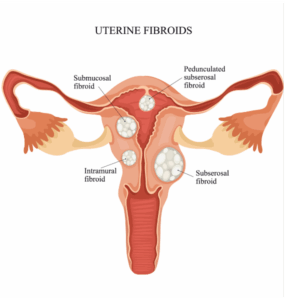Take Back Control: A Minimally Invasive Option for Fibroid Relief

During Women’s Health Month, Explore UFE as a Life-Changing Alternative to Surgery
Your Health, Your Choice
May is Women’s Health Month—a time to celebrate women’s strength and raise awareness around the health issues that uniquely affect them. If you’ve been dealing with the life-disrupting symptoms of uterine fibroids, now is the time to explore a safe, effective, and non-surgical treatment: Uterine Fibroid Embolization (UFE), available at TRA Endovascular.
What Is UFE and Who Is It For?
Uterine fibroids are non-cancerous growths that can cause symptoms like heavy menstrual bleeding, pelvic pain, pressure, frequent urination, or discomfort during intimacy. Nearly 70% of women will experience fibroids by age 50, but many are unaware of the minimally invasive options available.
UFE is a procedure performed by interventional radiologists to block blood flow to fibroids, causing them to shrink and symptoms to resolve. Unlike surgery, UFE does not remove the uterus and typically has a short recovery time.
UFE may be right for you if you:
- Have been diagnosed with symptomatic uterine fibroids
- Want to avoid surgery or preserve your uterus
- Are not currently pregnant
- Are looking for a fast recovery and outpatient care
Find out if UFE is right for you.
What to Expect: Before, During, and After UFE
Before the Procedure
- Consultation: A consultation at TRA Endovascular includes a full evaluation of your symptoms and imaging (MRI or ultrasound) to confirm the size and location of your fibroids.
- Preparation: You’ll receive instructions to stop eating and drinking several hours before the procedure. Most women return home the same day.
During the Procedure
- Outpatient and Minimally Invasive: UFE is typically performed under conscious sedation. A small catheter is inserted through a tiny incision in the groin or wrist.
- Guided Precision: Using real-time imaging, your interventional radiologist threads the catheter to the arteries supplying your fibroids and delivers tiny particles to block blood flow.
- No Stitches Required: The incision is small, often requiring only a bandage.
After the Procedure
- Recovery: Expect some cramping, fatigue, or flu-like symptoms for a few days, which are managed with medication. Most women return to normal activities within 7–10 days.
- Follow-Up: You’ll have a follow-up visit and may be scheduled for a post-procedure MRI to confirm the fibroids have shrunk.
How UFE Can Change Your Life
Women who undergo UFE often describe the results as life-changing:
- Lighter periods and improved menstrual cycle control
- Relief from pelvic pressure and bloating
- Reduced urinary frequency, improving sleep and quality of life
- Enhanced emotional wellbeing and energy
- Freedom from invasive surgery and long recovery times
Over 90% of women experience significant improvement or complete resolution of their fibroid-related symptoms after UFE.
Empowered Health Starts Here
At TRA Endovascular, we believe every woman deserves options—and the ability to take control of her health. This Women’s Health Month, don’t settle for living in pain or discomfort. Learn more about Uterine Fibroid Embolization and talk to your doctor about a referral. Relief could be just one appointment away.
Talk to your doctor today about a referral or call us directly at 253-284-0841 to schedule a consultation.
Learn more at traendovascular.com.
Resources:
- TRA Endovascular
- Uterine Fibroids: Real Stories, Real Struggles, and Real Hope
- Journal of the American Medical Association
- RadiologyInfo.org
